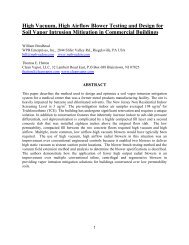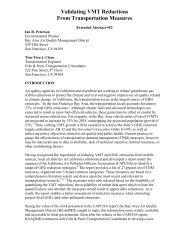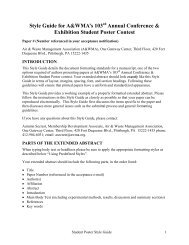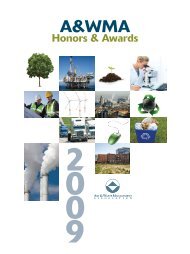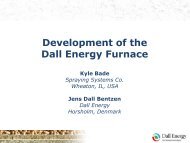Abstract Book
Abstract Book
Abstract Book
You also want an ePaper? Increase the reach of your titles
YUMPU automatically turns print PDFs into web optimized ePapers that Google loves.
Columbia that accounts for electricity imported and exported to the province are<br />
presented. The wide range of literature values available are compared to intensities<br />
calculated for the life cycle inventory. Limitations of solely using a life cycle inventory<br />
approach to compare different waste management scenarios are discussed.<br />
Cost-efficient Reduction Of Population Exposure Caused By Primary PM2.5<br />
Emissions In Finland (66)<br />
N. Karvosenoja, 1 K. Kupiainen, 1 V. Paunu, 1 M. Savolahti, 1 A. Tohka, 1 L. Kangas, 2 J.<br />
Kukkonen, 2 J. T. Tuomisto 3 ; 1 Finnish Environment Institute, Helsinki, Finland, 2 Finnish<br />
Meteorological Institute, Helsinki, Finland, 3 National Institute for Health and Welfare,<br />
Kuopio, Finland<br />
Ambient concentrations of fine particles (PM2.5) are caused by both long-range<br />
transported (LRT) air pollution and local emission sources. European level PM2.5 studies,<br />
e.g. GAINS modeling in the CAFÉ programme, assess mainly the impacts of LRT. This<br />
study focuses on the impacts of primary PM2.5 emissions from Finnish sources.<br />
We present emission estimate from 1984 to 2007, and the projections for 2020 taking into<br />
account the national climate mitigation strategy. Additional emission reduction potentials<br />
and costs on top of the requirements of current legislation in 2020 are evaluated. The<br />
emissions and dispersion of primary PM2.5 are computed on a 1 km horizontal resolution<br />
using the Finnish Regional Emission Scenario (FRES) model that incorporates sourcereceptor<br />
matrices (SRMs) based on model computations with the local scale UDM-FMI<br />
dispersion model. Cost-efficiency of emission reductions are assessed from population<br />
exposure point of view.<br />
The most significant sectors causing population exposure in 2020 are non-exhaust<br />
emissions of road traffic and supplementary wood heating. Furthermore, emission<br />
reductions in these sectors are challenging both technically and from legislation setting<br />
point of view. Largest emission reduction potentials occur in industry and energy<br />
production sectors, however, only modest reductions in population exposure could be<br />
achieved by enhancing primary PM emission controls in these sectors.<br />
The study highlighted the main emission sources of primary PM2.5 contributing to<br />
population exposure in Finland. The results support the focusing of future air pollution<br />
abatement strategies in order to limit the undesired impacts on human health.<br />
Baseline Study Of The Impact Of Lead Smelters In Egypt From 1998 To 2009 (83)<br />
Z. Safar, 1 M. W. Labib 2 ; 1 Cairo University- Faculty of Engineering, Giza, Egypt,<br />
2 Climate Change Central Department, Egyptian Environmental Affairs Agency (EEAA),<br />
Egypt<br />
This paper discusses major sources of lead emissions in the Greater Cairo (GC) area ,<br />
which includes lead smelters, Mazout (heavy fuel oil) combustion, lead manufacturing<br />
batteries factories, copper foundries, and cement factories.<br />
This paper describes the current lead emissions inventory (2005-2009), along with an<br />
approach to develop site specific emission factors and measurements to validate the<br />
36




